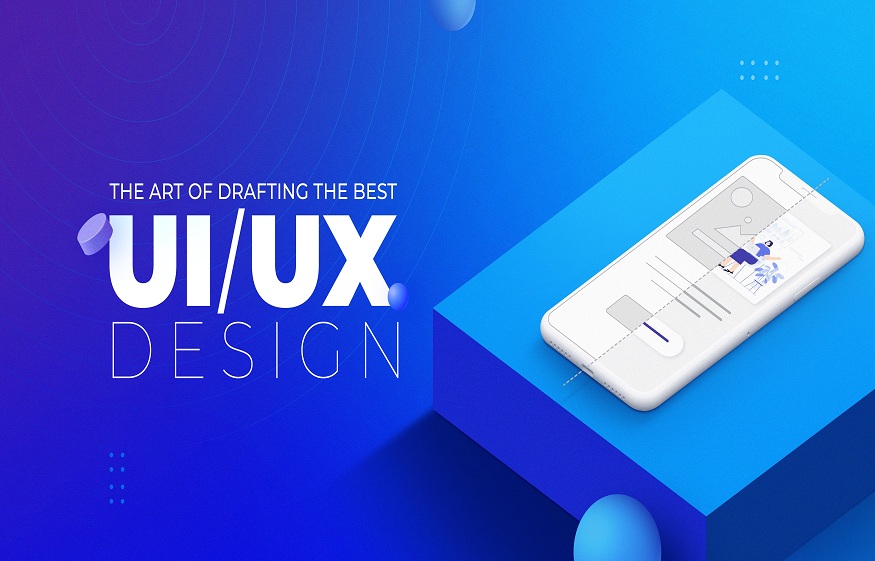Introduction:
UI or User Interface refers to the series of elements like screens, buttons, icons that allow the audience to interact with a product or service. In contrast, UX or User Experience is the experience that is generated from the interaction with that product or service. Both of them are vital parts of website development. If the website doesn’t appeal to the users or they don’t find what they are looking for, they might go elsewhere. UI determines how the users will engage and interact with the website, and UX refers to the feeling they get when they do it. Although there are similarities between UI and UX design, they are vastly distinct processes.
However, before you search for website design services near me, you should know the features of good UI and UX design. The elements of a sound UX design are:
- A well-defined target audience for the website and its goals and requirements.
- Proper research and user data analysis.
- A website flow gets created after considering the wireframe.
- Creation of a prototype with relevant functional information.
A good UI design, on the other hand, must include:
- Reflection on the visual identity and style of the client.
- Attractive layouts with good quality animations and transitions
- A communicative system and a comprehensive style guide.
In these times of humongous competition, one cannot afford to miss out on user experience and visual aesthetics when it comes to website design. Moreover, you should try to adhere to the SEO strategy while designing. This article will mention some guidelines to follow so that you can strike the perfect balance between UX and UI for your website.
How to balance UX and UI design?
If you are searching for competent web development agencies near me, here are some steps to follow while designing a website that will help you balance your UX and UI design.
Think like a user
The primary rule of designing a website is to think and behave like a user. Consider yourself as a user who will interact with the website. This will help you conceive design elements that will make it easier for a user to navigate the site and enhance the overall experience. Instead of blindly following the latest design trends, you should try to figure out what will work best for the user. Target your audience and consider their requirements to balance the design to produce what the customers want to see. Remember to consider the viewpoint of the user while searching for the best web design company near me.
Ensure easy navigation
The journey of a user through a website must be as streamlined and straightforward as possible. You should remember to use icons that unambiguously indicate their purpose, place tab bars consistently throughout the website, and provide easily accessible menus based on the user’s current location to ensure an intuitively navigable flow. You should try to minimize the steps required for critical actions. This will make the product easy to use and help you with customer retention.
Use the ‘color theory.’
The human attention span is continually decreasing, and it can be hard to retain your users’ focus. Interfaces that feature large chunks of text demand intensive focus from users leading to more fallout. You can effectively use colors to communicate implicit messages in a way that captivates the audience.
Colors can also be used to influence the user’s thoughts. Warm colors like yellow or red convey excitement and passion, while cooler shades of blue and green communicate a sense of trust and professionalism. You should carefully use colors to evoke abstract ideas about your business.
Keep it short and straightforward.
When a user lands on a particular website, their goal is to complete an action or get specific information and leave quickly. Hence endless scrolling is not conducive, especially for goal-oriented websites. This causes the responsiveness to decrease, which causes a fall in the rankings of SERPs.
You should also remember to focus on simplicity and clarity if you search for website design companies for small businesses near me. Easy navigation, clear CTAs make the page more appealing to users. Try to reduce negative spaces, shadows, patterns, and gradients. You should add more images, buttons, and shortcuts to structure the website.
Do not complicate forms.
While collecting information from a user, you should try to ensure that they are required to give the minimum possible text. Try to provide checkboxes and dropdown menus instead of giving lots of blank text fields. This ensures better conversion rates. Complicated forms will lead to an increase in bounce rates, and you will often find incomplete forms. This makes sure that the forms are relevant, short, and easy to fill.
Use images carefully.
It is essential to use images in your website design. Although interfaces overloaded with text can drive away potential customers, you should not use too many images to increase visibility. Instead of using random images from the internet, try to use relevant, high-quality images for your website. Try to upload real-time photographs of your products to communicate your business to your customers better.
Final words:
UI and UX design are not just limited to the appearance of a website. It is decisive in acquiring, retaining, and engaging with customers. You should focus on creating a distinct identity for your brand that becomes a differentiation factor and makes it easily recognizable by customers. Try to follow these basic guidelines and the latest trends in the industry while designing your website to motivate your users to keep on interacting with your website.

